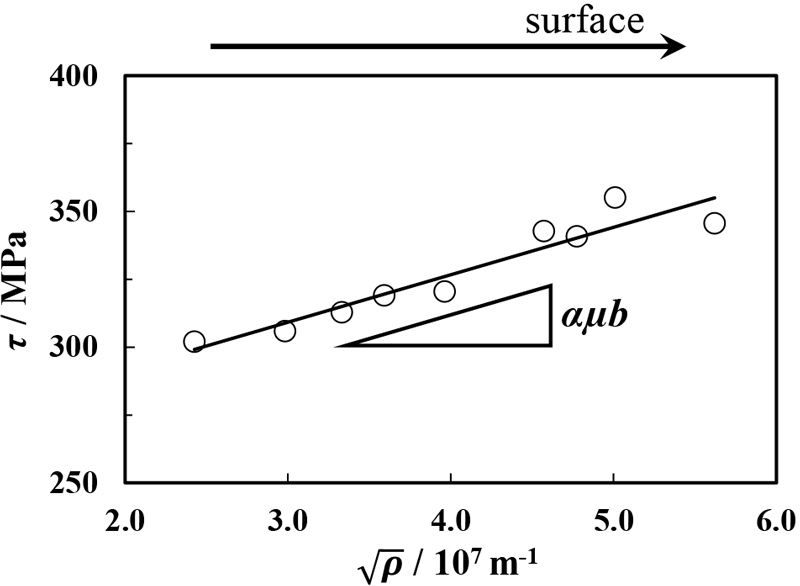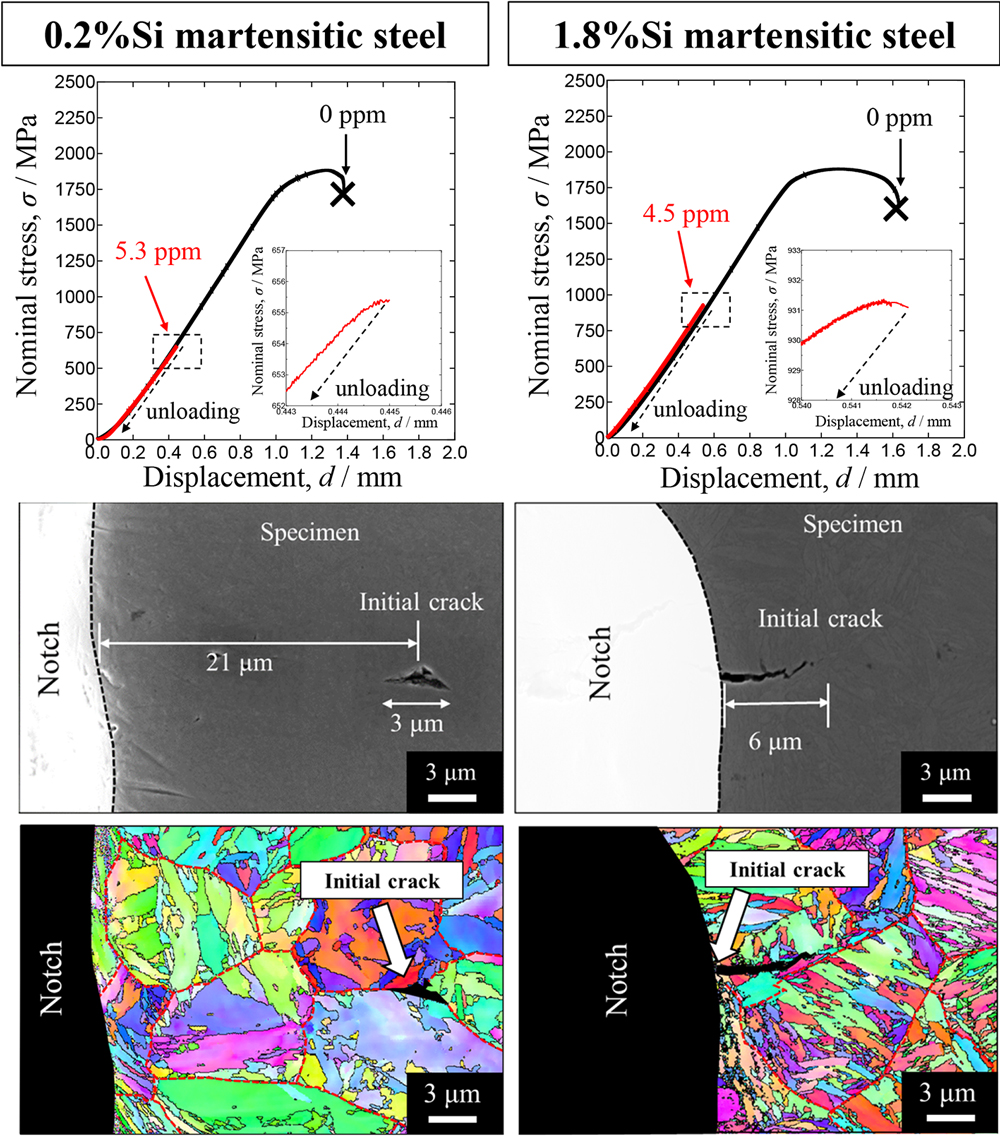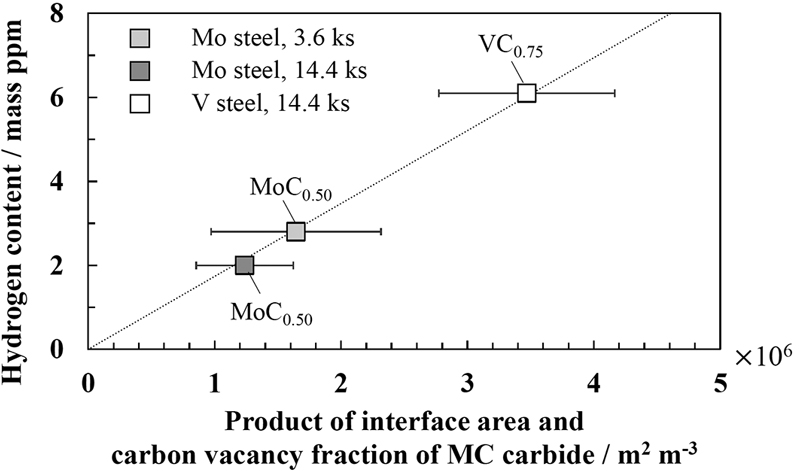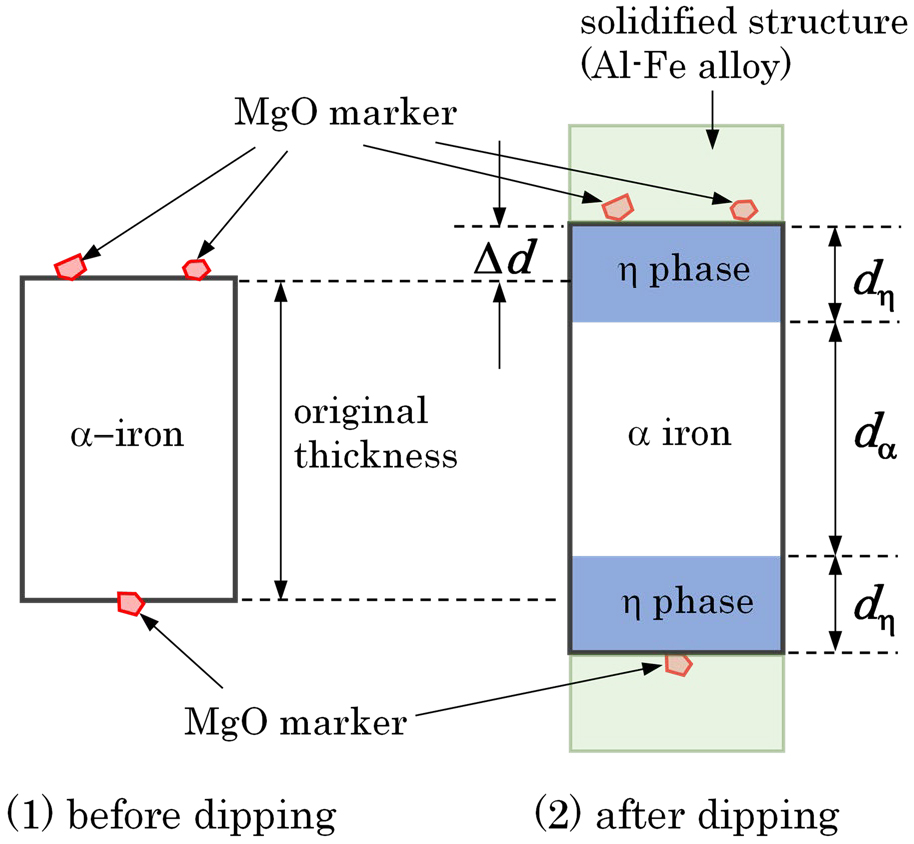
- |<
- <
- 1
- >
- >|
-
2023 年 109 巻 5 号 p. Cover-
発行日: 2023/05/01
公開日: 2023/04/30
ジャーナル オープンアクセスPDF形式でダウンロード (663K) -
2023 年 109 巻 5 号 p. Contents-
発行日: 2023/05/01
公開日: 2023/04/30
ジャーナル オープンアクセスPDF形式でダウンロード (2690K) -
2023 年 109 巻 5 号 p. Editorial-
発行日: 2023/05/01
公開日: 2023/04/30
ジャーナル オープンアクセスPDF形式でダウンロード (204K)
-
大菅 宏児, 足立 毅郎, 山﨑 慎太郎, 宮川 一也原稿種別: 論文
2023 年 109 巻 5 号 p. 355-364
発行日: 2023年
公開日: 2023/04/30
ジャーナル オープンアクセス HTMLSinter plant is becoming ‘‘a waste eater’’ that actively recycle the raw materials generated in the steelworks. Especially, the recycling demand of slags in steelmaking processes has been increasing. These slags, which contains substances with a high melting point, is well known to reduces the fluidity of the melt. We recognized that mixture of two types of granulates, a donor of melt (High CaO/Fe2O3) and a receptor of melt (Low CaO/Fe2O3), formed a homogeneous sinter cake when using parallel granulation process. By adjusting the adhesive layer components of two types of granulates, the melt from donor moves to receptor and assimilation can be promoted. So, we have developed the granulation method with inclined mixing of limestone that has improved both productivity and sinter strength even when using steelmaking slag. The promotion of melt assimilation state has been proved by using SEM with mineral phase analysis function and X-ray CT.
 抄録全体を表示PDF形式でダウンロード (15494K) HTML形式で全画面表示
抄録全体を表示PDF形式でダウンロード (15494K) HTML形式で全画面表示 -
盛家 晃太, 髙橋 功一, 村尾 明紀, 佐藤 健, 深田 喜代志原稿種別: 論文
2023 年 109 巻 5 号 p. 365-376
発行日: 2023年
公開日: 2023/04/30
ジャーナル オープンアクセス HTMLTo develop novel technologies for reducing CO2 emission from ironmaking process, steelmaking companies in Japan are engaging in the national project called COURSE50. In this project, a large amount of H2 is co-injected into blast furnace (BF) with pulverized coal (PC). In order to clarify how the co-injection affects PC combustibility, PC combustibility should be measured in COURSE50 BF. However, it was difficult to measure PC combustibility in BF without bothering operation. Therefore, we developed the non-contact measurement method for PC combustibility (ηPC) by utilizing chemi-luminescence spectra of PC combustion field in the lab-scale combustion furnace. We also applied the method to the COURSE50 experimental BF to ensure the accuracy of the method. And then we found that;
1) Several chemi-luminescence peaks of hydrocarbon radicals and coal ash were detected in the combustion field of PC. Among these peaks, the peak intensity ratio of OH radicals to CH radicals was most appropriate for deriving the formula for the ηPC estimation.
2) In the result of the measurement in COURSE50 experimental BF, ηPC in the experimental BF that estimated by the formula agreed well with the results in lab-scale combustion furnace. The validity of the method for estimating ηPC was confirmed.
 抄録全体を表示PDF形式でダウンロード (2234K) HTML形式で全画面表示
抄録全体を表示PDF形式でダウンロード (2234K) HTML形式で全画面表示
-
志村 眞弘, 河西 大輔, 大塚 貴之原稿種別: 論文
2023 年 109 巻 5 号 p. 377-386
発行日: 2023年
公開日: 2023/04/30
ジャーナル オープンアクセス HTMLThe skidding between rolls and steel strip is more likely to occur in the cold rolling process in accordance with an increase of tensile strength of the material following the customers' demands. This happens when the work rolls rotates faster than the longitudinal speed of the strip at the exit of the roll-bite. This phenomenon leads to not only the strip surface defection but the thickness nonuniformity and thus the aim of this study is defined to clarify the mechanism behind the phenomenon. In order to clarify the factor causing the skidding, the cold rolling experiments using two different steel grades, namely the Low Carbon Steel (LCS) and the Advanced High Strength Steel (AHSS) having respectively 270 and 980 MPa tensile strength, have been conducted, which was then assessed by the numerical analyses and the comparison of the forward slip characteristics was made between these two steel grades. It has been revealed that the forward slip is decreased under the low friction coefficient condition with an increase of the rolling reduction. In addition, the friction coefficient of the AHSS is lower than that of the LCS. The existence of the micro-plasto-hydrodynamic lubrication in the AHSS suggests a decrease in friction coefficient, which results in the exhibit of skidding, which was not observed in the LCS.
 抄録全体を表示PDF形式でダウンロード (3712K) HTML形式で全画面表示
抄録全体を表示PDF形式でダウンロード (3712K) HTML形式で全画面表示
-
兵藤 義浩, 柚賀 正雄, 栗原 康行, ドアン ティーフィン, 﨑本 隆洋, 村上 善明, 後藤 浩二, 田川 哲哉原稿種別: 論文
2023 年 109 巻 5 号 p. 387-397
発行日: 2023年
公開日: 2023/04/30
[早期公開] 公開日: 2023/02/03ジャーナル オープンアクセス HTMLThe fatigue crack propagation properties of newly-developed SM490 grade steels were investigated in comparison with a conventional steel of the same grade. The fatigue crack propagation rate of the developed steel in Region II of the da/dN-ΔK relationship was suppressed to about 1/2 that of the conventional steel, and its ΔKth value was more than twice as large as in the conventional steel. However, fatigue crack resistance for long crack propagation does not necessarily improve the fatigue life in a condition of increasing ΔK from a small defect, which is usually detected in practical fatigue damage in actual structures in service. The developed steels were subjected to surface crack propagation tests using specimens with artificial small defects to examine their potential under more practical conditions. The fatigue life of the developed steel was about three times longer than that of the conventional steel. A detailed analysis of the surface crack propagation revealed crack propagation below ΔKth only in the developed steels, which suggested the so-called “short crack regime” in a fatigue crack. The crack propagation from a surface defect that deviated from long crack behavior was convincingly explained by the corrected threshold using the R-curve model of a short crack proposed in the previous literature. Based on the experimental fatigue life improvement and its analytical estimation of the propagation resistance in the short crack regime, the effect of the ΔKth value for a long crack in the initial propagation stage just after fatigue crack initiation was discussed.
 抄録全体を表示PDF形式でダウンロード (2519K) HTML形式で全画面表示
抄録全体を表示PDF形式でダウンロード (2519K) HTML形式で全画面表示
-
伊藤 敦広, 鎌田 康平, 今福 宗行原稿種別: 論文
2023 年 109 巻 5 号 p. 398-405
発行日: 2023年
公開日: 2023/04/30
ジャーナル オープンアクセス HTMLThe effect of grit blasting on the surface and depth properties of hot rolled low carbon steel was investigated. The residual stress depth profile and dislocation density of the specimen were determined using X-ray diffraction. Dislocation density was evaluated by modified Williamson-Hall / modified Warren-Averbach method. Both dislocation density and hardness are highest at the blasted surface and reduce gradually with depth. Compressive residual stress is induced in the blasted surface having a maximum value at a depth of 60 µm from the top surface. This is followed by a steady decrease of compressive stress with depth and finally become tensile. In this experiment, the square root of the dislocation density is proportional to the hardness, and the hardness of the top surface, which could not be measured due to the roughness of the surface, can be estimated. The coefficient α in the Bailey-Hirsch equation was derived from the slope obtained by plotting the shear stress calculated from the hardness against the square root of the dislocation density.
 抄録全体を表示PDF形式でダウンロード (1286K) HTML形式で全画面表示
抄録全体を表示PDF形式でダウンロード (1286K) HTML形式で全画面表示
-
上村 直紀, 千葉 隆弘, 高井 健一原稿種別: 論文
2023 年 109 巻 5 号 p. 406-416
発行日: 2023年
公開日: 2023/04/30
[早期公開] 公開日: 2022/12/24ジャーナル オープンアクセス HTMLThe dependence of crack initiation sites and main factors causing hydrogen embrittlement fracture on carbide precipitation states has been investigated for tempered martensitic steels with the same tensile strength of 1450 MPa. Notched specimens charged with hydrogen were stressed until just before fracture and subsequently unloaded. The crack initiation site exhibited intergranular (IG) fracture at 21 μm ahead of the notch tip as observed by scanning electron microscopy (SEM) for 0.28% Si specimens with plate-like carbide precipitates on prior austenite (γ) grain boundaries. This crack initiation site corresponded to the vicinity of the maximum principal stress position as analyzed by a finite element method (FEM). The initiation site corresponded to the triple junction of prior γ grain boundaries as analyzed by electron backscattered diffraction (EBSD). In contrast, the crack initiation site exhibited quasi-cleavage (QC) fracture at the notch tip for 1.88% Si specimens with fine and thin carbide particles in the grains. This crack initiation site corresponded to the maximum equivalent plastic strain site obtained by FEM. Additionally, the crack initiated on the inside of prior γ grain boundaries and propagated along the {011} slip plane with higher kernel average misorientation (KAM) values as analyzed by EBSD. These findings indicate that differences in carbide precipitation states changed the crack initiation sites and fracture morphologies involved in hydrogen embrittlement depending on mechanical factors such as stress and strain and microstructural factors.
 抄録全体を表示PDF形式でダウンロード (13091K) HTML形式で全画面表示
抄録全体を表示PDF形式でダウンロード (13091K) HTML形式で全画面表示 -
磯部 浩一, 熊谷 優雅, 佐藤 匠原稿種別: 論文
2023 年 109 巻 5 号 p. 417-428
発行日: 2023年
公開日: 2023/04/30
[早期公開] 公開日: 2023/01/11ジャーナル オープンアクセス HTMLTo optimize reverse transformation treatment, which is effective in preventing hot rolling cracking in the CC-HCR (Continuous Casting - Hot Charge Rolling) process, three-dimensional metallo-thermo-mechanical analyses were performed. The metallo-thermo-mechanics and a CCT (Continuous Cooling Transformation) diagram estimation method using JMatPro were used to obtain the required cooling time for reverse transformation in immersion cooling with water jet and to elucidate the effects of nonuniform cooling and γ grain size on thermal deformation and stress generation behaviors during cooling and the mechanisms of these events.
These analyses clarified the following. When diffusion-controlled transformation occurs during cooling, the required cooling time increases as Dγ (Diameter of γ grain) increases, and becomes substantially constant when only martensitic transformation occurs. In addition, the difference of Dγ causes a difference in the type of transformation that occurs during cooling and the temperature range where transformation occurs during cooling, and these differences produce differences in the amount of transformation expansion, which greatly affects the bloom deformation behavior during cooling. Furthermore, there is a difference in the level of the maximum generated stress during cooling depending on whether the transformation that occurs near the bloom surface layer during cooling is diffusion-controlled transformation or martensitic transformation. In addition, this difference in transformation behavior also causes a difference in the mechanism of maximum stress generation.
 抄録全体を表示PDF形式でダウンロード (6567K) HTML形式で全画面表示
抄録全体を表示PDF形式でダウンロード (6567K) HTML形式で全画面表示
-
米澤 隆行, 森 孝茂, 堤 成一郎原稿種別: 論文
2023 年 109 巻 5 号 p. 429-437
発行日: 2023年
公開日: 2023/04/30
[早期公開] 公開日: 2023/02/04ジャーナル オープンアクセス HTMLIn this paper, the effect of cyclic softening properties on fatigue crack propagation behavior was investigated. Ferrite and ferrite-pearlite steels with different cyclic softening properties were produced by cold rolling process. The cold-rolled steels showed cyclic softening, and the cyclic softening rate increased as the cold reduction rate increased. As a result of fatigue crack propagation tests using CT specimens, the fatigue crack growth rate decreased with increasing the cold reduction rate. The crack growth rate and the cyclic softening rate showed a good correlation regardless of the microstructure. The cold-rolled steels showed crack closure/opening behavior, and the crack opening load increased with increasing cold reduction rate. In addition, the difference in fatigue crack propagation rates of cold-rolled steels was explained by effective stress intensity factor range. From these results, the decrease of fatigue crack growth by cold rolling was considered to be mainly due to the suppression of crack opening by cyclic softening near the fatigue crack tip.
 抄録全体を表示PDF形式でダウンロード (3403K) HTML形式で全画面表示
抄録全体を表示PDF形式でダウンロード (3403K) HTML形式で全画面表示 -
谷口 俊介, 亀谷 美百合, 小林 由起子, 伊藤 一真, 山﨑 真吾原稿種別: 論文
2023 年 109 巻 5 号 p. 438-449
発行日: 2023年
公開日: 2023/04/30
[早期公開] 公開日: 2023/01/27ジャーナル オープンアクセス HTMLMartensitic steels of Fe-0.1%C-2%Mn-1.6%Mo alloy and Fe-0.1%C-2%Mn-0.2%V alloy were subjected to tempering at 873 K to investigate hydrogen trapping of Mo carbides and V carbides. We carried out the detail analysis of the alloy carbides by atomic-resolution scanning transmission electron microscopy and atom probe tomography, and the evaluation of hydrogen trapping energy by ab initio calculation. The hydrogen content of the Mo added steel tempered for 1.8 ks increases from that of the quenched Mo added steel and the hydrogen content monotonically decreases as the tempering time increases. The hydrogen content of the V added steels increases during the tempering to 7.2 ks and then keeps almost constant. Plate-shaped B1-type Mo carbide with a chemical composition of MoC0.50 is precipitated in the Mo added steel tempered for 3.6 ks. Needle-shaped HCP Mo2C is precipitated and the B1-type Mo carbide decreases in the Mo added steel tempered for 14.4 ks. Plate-shaped B1-type V carbides with a chemical composition of VC0.75 is precipitated in the V added steel tempered for 14.4 ks. We found the positive correlation between the hydrogen content and the product of the interface area and the carbon vacancy fraction of B1-type alloy carbide. The hydrogen trapping energy of the carbon vacancy at the interface between BCC-Fe and B1-type Mo carbide is higher than that of the interstitial sites in BCC-Fe. These results suggest that the main trapping site in the tempered Mo added steel is the carbon vacancy at the interface of B1-type MoC0.50, not HCP Mo2C.
 抄録全体を表示PDF形式でダウンロード (5590K) HTML形式で全画面表示
抄録全体を表示PDF形式でダウンロード (5590K) HTML形式で全画面表示
-
上島 良之原稿種別: 寄書
2023 年 109 巻 5 号 p. 450-455
発行日: 2023年
公開日: 2023/04/30
ジャーナル オープンアクセス HTMLA certain relation was found between melting temperature of sulfides and their bond strength index. It can be used as a convenient method to know the melting temperature of multi-component sulfides for which thermodynamic information is lacking. These results are similar to those of the previously reported multi-component oxides and fluorides.
 抄録全体を表示PDF形式でダウンロード (874K) HTML形式で全画面表示
抄録全体を表示PDF形式でダウンロード (874K) HTML形式で全画面表示
-
篠塚 計, 江阪 久雄原稿種別: 寄書
2023 年 109 巻 5 号 p. 456-461
発行日: 2023年
公開日: 2023/04/30
ジャーナル オープンアクセス HTMLIn order to investigate the formation mechanism of η phase (Fe2Al5 phase) during aluminizing process, a so-called marker experiment has been developed in this study. Angular and small MgO particles have been placed firmly on the surface of iron plate. Using iron-saturated aluminum melt bath, which was kept at 700 ºC, an iron specimen was dipped for 11 minutes. Then the cross section was metallographically analyzed. MgO particles were found on the boundary between the Al-Fe alloy region and η phase. This fact indicated that Al diffuses into the α-iron but Fe does not diffuse out into the aluminum melt. It also indicated that the formation site of η phase is on the η/α-iron interface. Since the thickness of η phase is proportional to the square root of dipping time, this process is controlled by the volume diffusion of Al atoms in the η phase. It also found that the thickness of iron plate increased with increasing dipping time. This can be explained semi-quantitatively taking into account of the change in the phase and volume between α-iron and η phase.
 抄録全体を表示PDF形式でダウンロード (1590K) HTML形式で全画面表示
抄録全体を表示PDF形式でダウンロード (1590K) HTML形式で全画面表示
- |<
- <
- 1
- >
- >|